1
The Cafeteria is the largest room in the Diefenbunker, and was designed to be a space for recreation and relaxation. The Cafeteria is divided into three sections: the recreation area, the eating area, and the kitchen area. The back wall of the eating area of the Cafeteria displays the Diefenbunker's 'window', a mural view of the Bow River in Alberta. The window was put in to reduce claustrophobia, and to give employees a nice glimpse at the outdoors while they enjoyed a meal. The Cafeteria was certainly a popular room in the bunker, not only because of its large, open feel, but also because the food served in the Cafeteria is reputed to have been some of the best food on any Canadian Forces base. Many former employees list the high quality of food as being one of the main reasons that their posting at CFS Carp was so enjoyable.2
Cafeteria (Eating Area)15 March 2013
Diefenbunker: Canada's Cold War Museum, Carp, Ontario, Canada
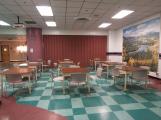 Credits:
Credits:Diefenbunker Archives
3
Janet Puddicombe worked at CFS Carp as a teletype operator and communications worker from 1981 until 1987. She worked in the Federal Warning Centre, the Ottawa Semi-Automatic Exchange (OSAX) and the Message Control Centre. Janet fondly remembers her time at the Diefenbunker and the friends that she made while posted here. Like many others, Janet also remembers the Diefenbunker being the best mess that she had ever eaten in.4
Janet Puddicombe (Meals in the Cafeteria)28 June 2011
Message Control Centre, Diefenbunker Museum
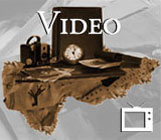 Credits:
Credits:Lara Lavelle (Interviewer)
5
The kitchen staff worked very hard to keep all employees happy. There are many reports of former CFS Carp employees saying that if they did not like what was being served for dinner one day, the kitchen would prepare them their own individual meal. A former cook at the Diefenbunker recalls there being about 8 - 10 cooks on staff. Cooks would work either a day shift, an evening shift or a night shift. Many of the cooks on staff lived on site at the Diefenbunker for the duration of their post. The same former cook, John Publicover, also recalls being told in his interview not to share with people the volume of food that he cooked. People were supposed to think that CFS Carp was a small Military Communications Base, the general public was not supposed to know that CFS Carp would have housed the Prime Minister and the Governor General, or that the kitchen was always prepared to feed 535 people in the event of a 30 day lockdown situation.6
Diefenbunker Cafeteria (Meal Preparation)circa 1962
CFS Carp, Carp, Ontario, Canada
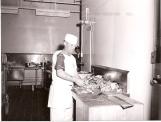 Credits:
Credits:Diefenbunker Archives
7
The Cafeteria was open 24 hours a day, 7 days a week, and served four meals daily for 33 years while the bunker was operational. The Cafeteria always had enough fresh food for 7 days, this supply was replenished every Monday. If the bunker did go into lockdown, the kitchen would serve ration packs for the remaining 23 days of lockdown. Because the Diefenbunker did not ever experience a 30 day lockdown situation, CFS Carp employees had nothing but good experiences with the food, and nothing but good things to say about the chefs.8
Diefenbunker Cafeteria (Meal Preparation)circa 1962
CFS Carp, Carp, Ontario, Canada
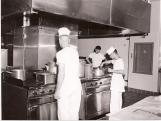 Credits:
Credits:Diefenbunker Archives
9
There is a dumbwaiter near the fridges that was used to bring food from the big freezer on the 100 level up to the kitchen area of the Cafeteria. The freezer in the Food Storage Area on the 100 level was used to store most of the 7 day supply of fresh food. There is also a pantry area where all of the dry food and ration packs were stored. The ration packs were ready to be used in a lockdown situation.10
Diefenbunker Cafeteria (Chef)circa 1962
CFS Carp, Carp, Ontario, Canada
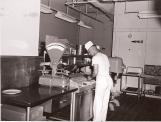 Credits:
Credits:Diefenbunker Archives
11
The kitchen was equipped with stainless steel counter tops and large stainless steel appliances. There are three walk-in coolers in the kitchen: one for dairy products, one for meat products, and one for vegetables. There were also originally large electric stoves installed under the hood vent in the Cafeteria. According to former cooks, this large hood vent was also once host to a large supply of home-brewed beer. CFS Carp was officially supposed to be a dry base, but many reports indicate otherwise.12
Diefenbunker Cafeteria (Serving Counter)circa 1962
CFS Carp, Carp, Ontario, Canada
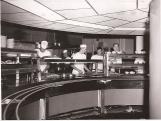 Credits:
Credits:Diefenbunker Archives
13
Brenda Langman held several positions at CFS Carp during her posting from 1984-1989. She worked as a switchboard operator, worked communications in FCC, as a teletype operator in the message centre, and finally worked communications in OSAX. Brenda has many fond memories about her posting at CFS Carp, and had many exciting memories to share. One of the things she remembers most of all was the food served in the Cafeteria.14
Brenda Langman (Food)26 August 2011
Board Room, Diefenbunker Museum
 Credits:
Credits:Lara Lavelle (Interviewer)